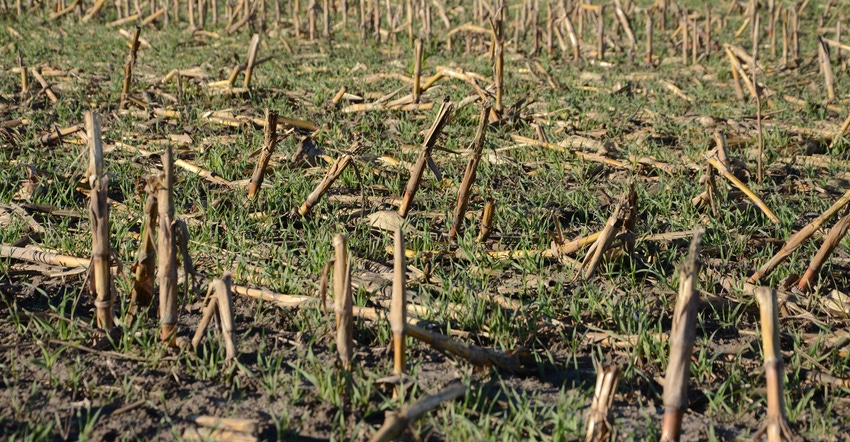
While farmers may be hearing a lot about cover crops these days, the fact is that in Iowa, the acreage planted to cover crops has topped out at 2 million so far. That's less than 10% of the 26 million acres estimated in crops for the state. Yet more farmers are considering the practice — so how do you get started?
First step, says Mark Licht, Extension cropping systems specialist, Iowa State University, is to ask what your goal is for cover crops. Licht discussed the basics of cover crops during the ISU Integrated Crop Management event late in 2021. And he opened his discussion with one question: What is your goal?
"That's the first question to ask yourself," Licht says. He looked at three sets of goals that might drive a decision to consider cover crop use. Soil health is driving a lot, he notes, with a focus on boosting soil organic matter, developing soil structure, improving water infiltration, reducing soil erosion or boosting microbial activity.
But another goal for cover crops resolves around input management, including reducing nitrate and phosphate losses, boosting pesticide absorption, improving chemical breakdown and enhancing nutrient cycling. "How you get to these goals is through more biomass," Licht says. "Some would argue that for increased nutrient cycling, you need to be talking more about diverse crop mixes, and that the species being used now are by and large more for biomass."
The third goal option is to suppress winter annual weeds, suppress early-season weeds, provide forage options for the farm and increase wildlife habitat.
"By defining these goals, the underpinning needs behind the goal can help you manage cover crops and determine what you choose," he says.
Being successful
Cover crops can be challenging, from setting a fall planting date (including working out the mechanics) to terminating that cover crop in the spring. "There are four keys to success," Licht says. "Mindset, systems change, establishment and termination are all part of that."
He adds that getting the right mindset is important. The challenge is that it takes a few years to establish cover crops, but farmers often want to see first-year success. "It can take multiple steps to get cover crops to work," he says.
Some of that mindset goes back to the goals you want to accomplish. Cover crops are established in the fall, and that may require nutrient management including species choices, seeding rates and planting timing. Licht says the biggest challenge is timing and method of establishment.
If you broadcast or aerially apply cover crops, the timing is August or September before harvest. If you drill after harvest, the timing is likely October, "and I hope not November," Licht says. These choices can influence management on the front end of the cover crop decision.
Cereal rye has become a popular choice for a cover crop, especially ahead of soybeans in the following year. Licht notes seed for that crop is less expensive that winter wheat, and while oats have been used, the success rate has been lower. Oats, of course, are killed by winter. They add biomass but may not be much help in slowing spring weed emergence.
Vetches and clovers are more popular ahead of corn, but there's not a lot of time to establish that crop in the fall. "If they're not established, they won't overwinter," Licht notes. "We hardly ever get vetches and clover to overwinter in our studies."
What mix?
Based on a study conducted about two years ago, 90% of Iowa farmers are using cereal rye; one-fifth are using radishes or turnips as a cover crop; one-fifth use oats; 16% use vetch-clover-cowpea mixes; and 15% use winter wheat. The numbers don't add up to 100% because some farmers use more than one choice for different rotations.
As Licht notes, there are a lot of decisions surrounding cover crops. A thorough look at your management and how it might change to boost establishment, and a commitment to more than a single year is what it will take to succeed. If you've committed to plant cover crops in 2022, some winter analysis and planning could boost success.
One tool he recommends comes from the Midwest Cover Crops Council, which has developed a decision tool that helps you look at the right mix for your location. Check it out at mccc.msu.edu.
About the Author(s)
You May Also Like




